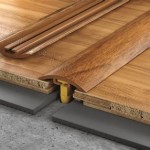Installing vinyl laminate flooring is a great way to update the look of your home without breaking the bank. Vinyl laminate flooring is a cost-effective alternative to hardwood floors, and it’s easy to install and maintain. Whether you’re a DIYer or a professional installer, this guide will walk you through the steps of installing vinyl laminate flooring.
Tools and Materials Needed
Before you start installing your vinyl laminate flooring, you’ll need to gather the tools and materials you’ll need. You’ll need the following:
- Vinyl laminate flooring
- Underlayment
- Tape measure
- Chalk line
- Utility knife
- Jigsaw
- Hammer and nails
- Tapping block
- Vinyl flooring adhesive
Preparing the Subfloor
The first step in installing your vinyl laminate flooring is to prepare the subfloor. You’ll need to make sure that the subfloor is clean, dry, and level. Remove any debris, such as carpet padding or underlayment, and use a level to make sure that the floor is even. If there are any areas that need to be filled in, use a patching compound to do so.
Laying the Underlayment
The next step is to lay the underlayment. This is a thin layer of foam that will provide cushioning and insulation for the vinyl laminate flooring. Start by measuring and cutting the underlayment to fit the room. Then, use a hammer and nails to secure the underlayment to the subfloor. Make sure that the seams are sealed with tape to prevent moisture from getting underneath.
Installing the Vinyl Laminate Flooring
Once the underlayment is in place, you can start installing the vinyl laminate flooring. Start in one corner of the room and work your way out. Use a chalk line to mark the edges of the planks and use a utility knife to cut them to the proper size. Place the planks together and use a tapping block to ensure a tight fit. Secure the planks to the subfloor with a vinyl flooring adhesive.
Finishing Touches
Once the vinyl laminate flooring has been installed, the final step is to add the finishing touches. Use a jigsaw to cut around door frames and other obstacles. Then, add trim or molding to the edges of the floor. This will help to protect the edges and give the floor a finished look.
Conclusion
Installing vinyl laminate flooring is a great way to update the look of your home without breaking the bank. With the right tools and materials, it’s easy to install vinyl laminate flooring. Just make sure to prepare the subfloor and lay the underlayment before installing the vinyl planks. Add the finishing touches and you’ll have a beautiful, durable floor that will last for years to come.








:max_bytes(150000):strip_icc()/easy-install-plank-vinyl-flooring-1822808-09-a1f83db7bdf74f279f45594b897de82d.jpg)






Related Posts








